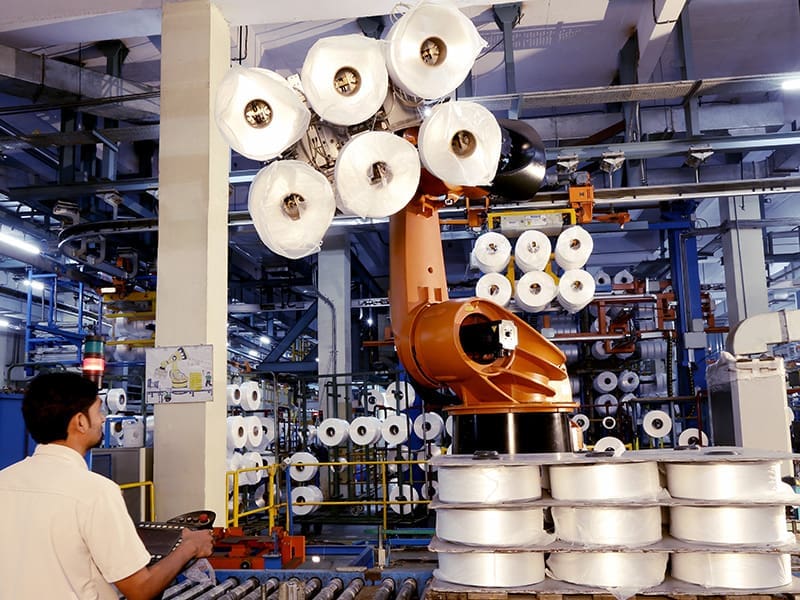More than the coronavirus pandemic, the local nylon spinning industry is facing a severe threat from China. Along with the sharp fall in demand and with powerloom units still to restart, the existence of Surat’s nylon yarn spinning industry is being threatened by yarn imported from China.
In Surat, the nylon yarn manufacturing units employ about 10,000 workers and give indirect employment to over 50,000 people. Of the 16 nylon spinning factories in the country, 10 units are in and around Surat, contributing about 90% of India’s nylon yarn production. However, despite strong sentiments in favour of ‘vocal for local’ and ‘boycott China’ campaigns, manufacturing in the Rs 3,500 crore nylon yarn industry in Surat has dropped from 12,000 metric tonnes per month to 2,000 metric tonnes post- lockdown.
The annual imports of nylon yarn in India is about 25,000 metric tonnes and 60% of that comes from China alone. If this year too, Chinese nylon yarn of the same quantity comes to India, then the local industry will be severely affected.
“Chinese imports are severely damaging the existence of nylon yarn spinners in India,” said senior vice-president of Century Enka, Sanjay Mehrotra, who is also the secretary of Surat Nylon Yarn Spinners Association (SNYSA).
Mehrotra added, “Against less than 1% of India’s imports of nylon yarn being from China in 2016-17, the share of Chinese yarn increased to 60% of the imports in 2019-20. The industry needs protection from China to become ‘Atma-nirbhar’. Not just anti-dumping duty, but there is a need to review customs duty and the Free Trade Agreement (FTA) with Asian countries to protect domestic yarn spinners.”
In the domestic man-made fibre (MMF) basket, nylon yarn has less than 4% manufacturing share, with 90% consisting of the polyester consumed by domestic powerloom weavers. Around 10% of the powerloom weaving units use nylon yarn for manufacturing dupatta, high-value jacquard saris and square net fabric.
Nylon yarn imports in India stood at 18,000 metric tonnes in 2016-17 and China accounted for just 180 metric tonne or 1% of total imports. Now, the nylon imports surged to 25,000 metric tonnes in 2019-20 and China contributed 15,000 metric tonne or 60%. In volume terms, the imports from China have jumped 83 times in four years.
Industry experts say that during the pre-Covid period, the local industry had already shrunk to 70% of its installed capacity, being edged out by Chinese imports. Against the annual 1.98 lakh metric tonnes manufacturing capacity, the nylon spinning mills produced less than 1.20 lakh metric tonnes.
The Chinese exporters, according to the industry players, are dumping nylon yarn with heavy under-invoicing. The imported nylon yarn is about 10% cheaper compared to the yarn from Surat.
Vinay Agarwal, director, Aglon industries private limited said, “We invested Rs 100 crore in 2016, but due to increased imports from China, we are facing a huge challenge ahead. Our monthly production has reduced from 650 tonnes to less than 100 tonnes. If Chinese imports continue we will have to close.”
Narain Aggrawal, president of Surat Nylon Yarn Spinners Association said, “If Chinese yarn continues to be dumped here, yarn spinners will have to shut units.”
Anti-dumping duty
Three years ago, the nylon spinners had approached the Directorate General of Trade Remedies (DGTR) against the dumping of imported nylon yarn from China. After detailed investigation and due diligence, DGTR authorities issued their final findings. They found severe injury to the domestic yarn spinners and recommended anti-dumping duty on March 4, 2020.

